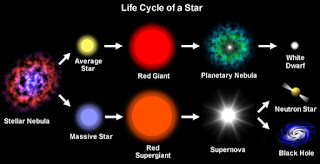PLANET VENUS
Venus is the second planet from the Sun. It is named after the Roman Goddess of love and beauty. As the brightest natural object in the Earth's night sky after the Moon. Venus takes 224.7 Earth days to orbit around the Sun and takes 243 Earth days to rotate on its axis. it doesn't have any moons like the planet Mercury. Venus is a terrestrial planet and sometimes it is known as the "Sister Planet" of the Earth because of its similar size, mass, proximity to the Sun and bulk composition. the atmosphere if Venus is the most dense atmosphere among all the four terrestrial planets and contains 96% of carbon di oxide. While in other matters it looks a way different that our Earth.
Venus is covered with highly reflective and opaque clouds of sulphuric acid that is why its surface is not visible from space in light. Atmospheric pressure on the surface of the planet is 92 times larger than that of the Earth. Also this is the hottest planet in the Solar System with an average temperature of 735 K (462°C or 863°F). It may have water in the past but it would have vapourized due to the high increase in the greenhouse effect. Water has probably dissociated, and the free hydrogen has been swept into interplanetary space by the Solar Wind because of the lack of the Planetary Magnetic Field.
Physical Characteristics
Venus is one of the four terrestrial planets in the Solar System, which means it is a rocky planet like Earth. It is similar in shape and size with Earth and is sometimes called "sister" or "twin" Planet of Earth. Venus has a diameter of 12,092 kilometres (7514 mi) and the mass is 4.8685*10²⁴ kg. 96.5% of Atmospheric mass of Venus is covered with carbon dioxide and remaining 3.5% is fulfilled by Nitrogen.
About 80% of Venusian surface is covered with smooth volcanic plains, consisting of 70% plains with wrinkle ridges and 10% smooth or lobate plains. The rest of the surface area is covered with two highland continents, one lying in the planet's Northern Hemisphere and the other just south of the Equator.
Much of Venusian surface is shaped by Volcanic activities and it has several times as many volcanoes on Earth, and it has 167 volcanoes that are over 67 miles across. There are several evidences which prove the happening of Volcanic activities on Venus. Concentration of Sulphur dioxide in the atmosphere dropped by a factor of 10 between 1978 and 1986, jumped in 2006, and again declined 10-fold. This may mean that levels had been boosted several times by large Volcanic eruptions.
Atmosphere And Climate
Venusian atmosphere is extremely dense and is composed of 96.5% carbon dioxide and 3.5% nitrogen— both exist as supercritical fluids, at the Planet's surface— and traces of other gases including sulphur dioxide. The pressure at its surface is about 92 times that of the Earth's and the density at the surface is 65 kg/m³, 6.5% of water.
The carbon dioxide rich atmosphere generates the strongest greenhouse effect in the Solar System, creating Venus the hottest planet despite of its distance from the Sun which is approximately double to that of Mercury and recieves only 25% of Mercury's Solar radiance.
Magnetic field And Core
In 1967, Venera 4 Spacecraft found that the Magnetic Field of Venus is much weaker that the Earth's magnetic field. This magnetic field is induced by an interaction between ionosphere and Solar Wind rather than by internal dynamo as in the Earth's core. This weak magnetic field provides negligible protection to the atmosphere from cosmic radiation.
Prospects Of Life
Like Mercury, the prospects for life on Venus appeared to be poor. There is very little water on the planet since most of it has been lost through photo dissociation. What water does remain has no chance of being liquid on the surface, since the temperatures there are far too high.
However recent evidence has caused some scientists to rethink their views on the life on Venus. The presence of Sulphur dioxide and hydrogen sulphide together in the atmosphere is puzzling, since these gases quickly react with one another and are destroyed. Although volcanic activity can replenish the gases and the fact that their concentrations are highest for above ground level (around 50km or 31mi) suggests something else might be going on.
Some other figures related to Venus are given below:
1. Surface temperature: 735 K (462°C) (average)
2. Distance from Sun: 107 million km (67 million mi)
3. Diameter: 12092 km (7513mi)
4. Gravity: 8.87m/s²
5. Solar day: 243 Earth days
6. Solar year: 224.7 Earth days
8. Satellites: None
9. Surface Area: 460.2 million km²
10. Volume: 92.8*10¹⁰km³
11. Mass: 4.8675*10²⁴kg
12. Density: 5.24 g/cm³










Comments
Post a Comment